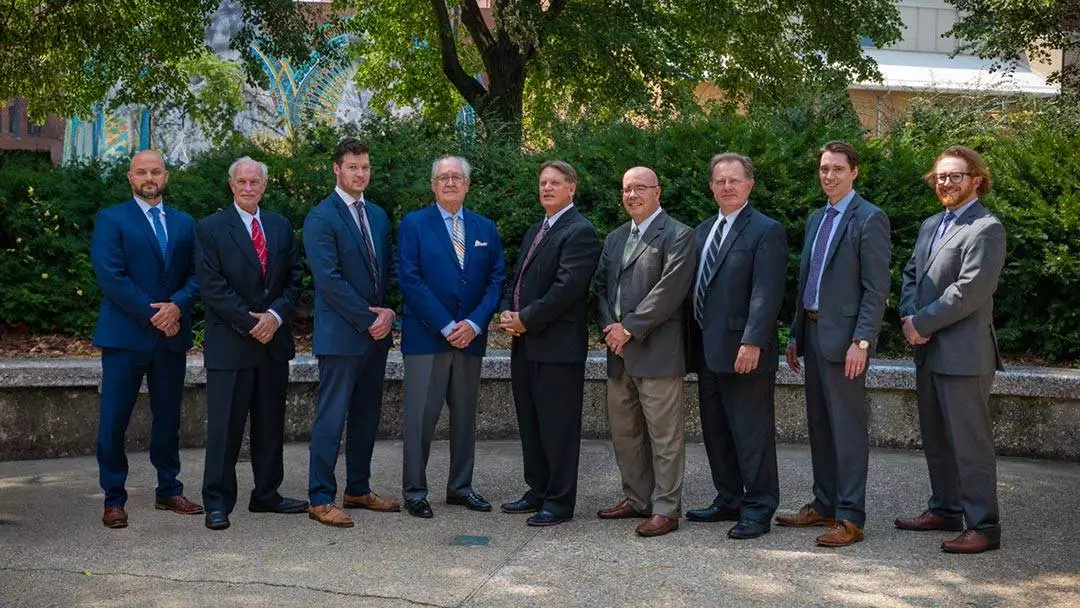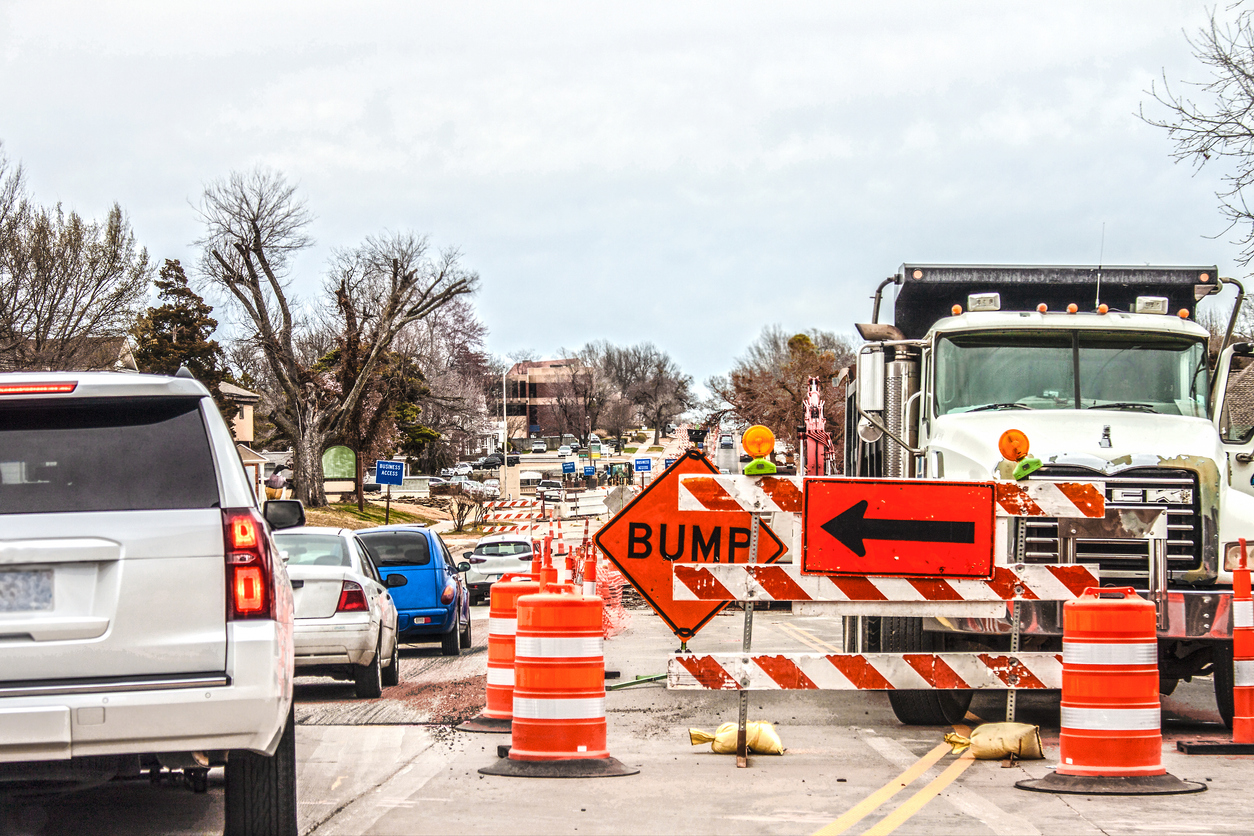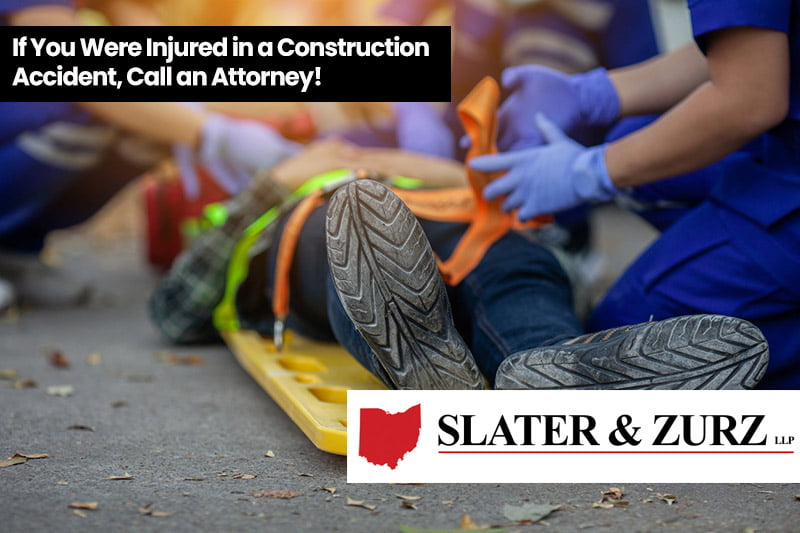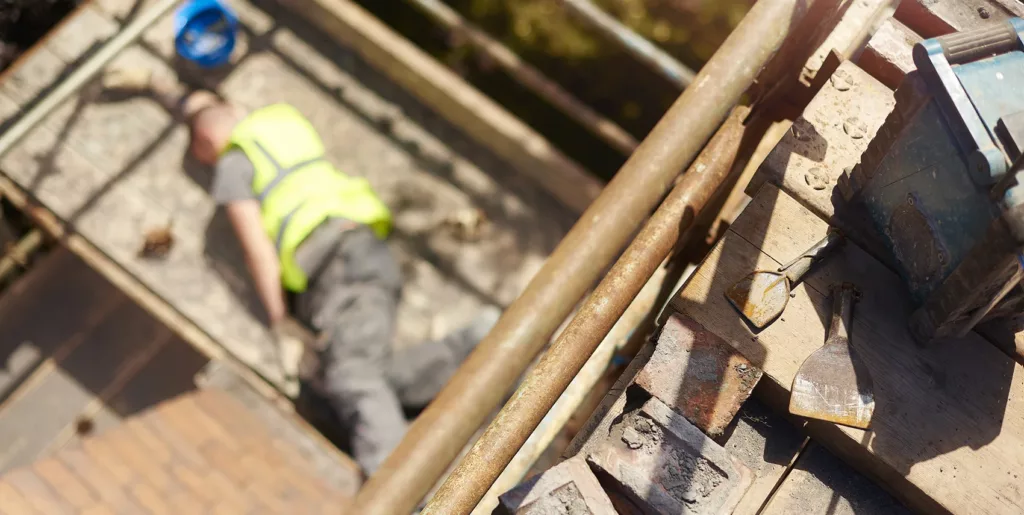For many Ohio drivers, construction zones are a familiar headache. From I-71 through Columbus to the never-ending I-75 projects around Cincinnati and Dayton, year-round roadwork means year-round risks.
Unsurprisingly, the number of construction zone car accidents in Ohio has climbed in recent years. Since 2019, the state has seen roughly 26,000 construction zone crashes, resulting in 9,000 people being injured, of which 100 were fatal.
Experienced a construction zone car accident in Ohio? It can be confusing to untangle the mess of unclear signage, speeding drivers, and shifting lane lines — especially when insurance adjusters are already asking questions. Here’s what you need to know to avoid costly mistakes and get the compensation you’re entitled to.
Liability isn’t always cut and dry
Most car accidents boil down to one question: who was at fault? In a construction zone, the answer is often murky.
Let’s say someone crashes into another car while navigating a confusing merge. Was it the driver’s fault for failing to yield — or the construction company’s for setting up poorly marked lanes? What if a crash happens because a sign was missing or a barrier was placed too close to moving traffic?
In Ohio, liability could fall on:
- Another driver for speeding, tailgating, distracted driving, or illegal merging
- A construction company for improper signage, unsafe lane shifts, or failing to follow safety regulations
- A government agency, in rare cases, if the road work was mismanaged or not up to code
That’s why accidents in construction zones may require an in-depth investigation. This could involve reviewing construction plans, gathering video evidence, and analyzing the timeline of work being performed.
You may still have a claim, even if partially at fault
In Ohio, personal injury claims operate under a comparative negligence rule. That means if someone is partially at fault for the accident, they can still recover damages as long as they’re not more than 50% responsible.th investigation. This could involve reviewing construction plans, gathering video evidence, and analyzing the timeline of work being performed.
In Ohio, personal injury claims operate under a comparative negligence rule. That means if someone is partially at fault for the accident, they can still recover damages as long as they’re not more than 50% responsible.
So, let’s say someone was speeding slightly through a work zone, but the other driver made an illegal turn. If the speeding driver is found to be 20% at fault, they could still recover 80% of their total damages.
That said, insurance companies may try their best to reduce payouts. Having a car accident attorney by your side helps ensure fault is fairly assigned, and you don’t get shortchanged just because the accident happened in a chaotic environment.
Learn more about what you need to file an Ohio car accident claim.
Construction crews and contractors aren’t always ODOT employees
After a crash, most people assume the work zone was set up by the state. However, in reality, many construction projects in Ohio are managed by private contractors or subcontractors, not ODOT.
This matters because if the accident was caused by a poorly marked lane shift, missing signage, or unsafe traffic control, a private company could be held liable, not the state.
But tracking down which company was in charge (and what safety rules they were supposed to follow) isn’t always straightforward. Luckily, an attorney can help identify the right party before crucial details get buried under layers of subcontracting.
Your medical care timeline matters more than you think
Many people walk away from a construction zone crash feeling “shaken but okay,” only to experience pain or stiffness days later. That’s common, but it’s also where people accidentally hurt their case.
Insurance companies may use any delay in treatment to argue that the injury wasn’t serious or wasn’t caused by the crash. That’s why it’s important to get checked out early and keep clear records of your symptoms, doctor visits, and prescribed treatments.
Learn more about the car accident pain scale and what it means for your claim.
Most construction zone car accident evidence is time-sensitive
In most personal injury cases, time matters. But the clock ticks even faster for construction zone car accidents. After all, orange barrels move, signs get taken down, and what was true one day might be completely different the next.
That’s why timely video or photographic evidence is gold in construction zone car accidents. If a crash occurs, try to preserve:
- Dashcam footage (from all vehicles involved, if possible)
- Photographs of the scene, including signage, barriers, and tire marks
- Witness contact information
- Any business names nearby that may have security cameras
But even with evidence in hand, the next steps aren’t always clear. If you’re overwhelmed trying to collect footage, unsure what’s useful, or sitting on photos and dashcam clips but don’t know what to do with them, we can help.
At Slater & Zurz, we’ve recovered millions for Ohioans who’ve been hurt in chaotic, preventable traffic situations just like this. If you’re dealing with the aftermath of a construction zone car accident, we can help you make sense of the evidence, identify who’s really at fault, and pursue the compensation you deserve.
Contact us for a free consultation at 330-762-0700 today.
Written by Robert Horton
Rob, a partner at Slater & Zurz, brings over a decade of experience advocating for the injured. His exceptional negotiation skills have consistently secured favorable outcomes for clients in motor vehicle accidents, dog bite incidents, and slip-and-fall cases.






